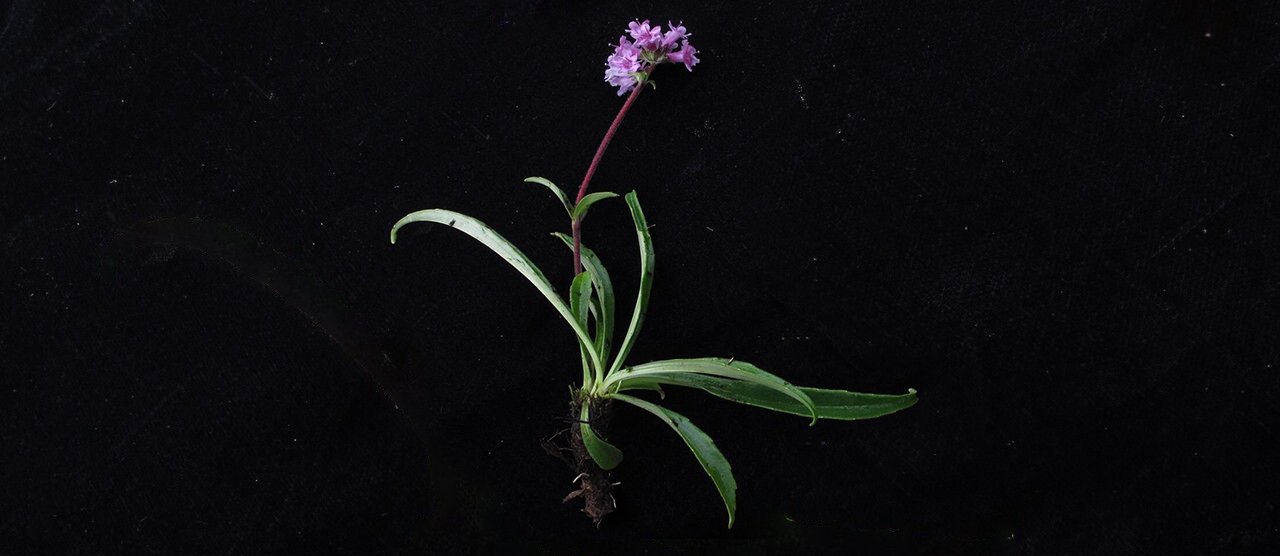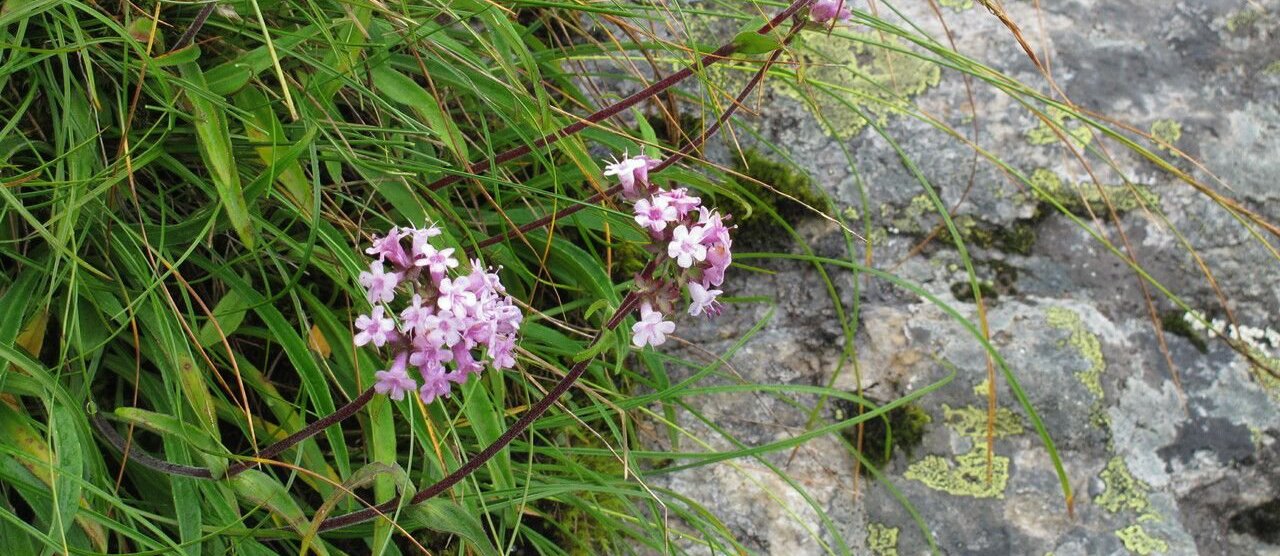Jatamansi is a pretty plant with pink flowers of the honeysuckle family that grows in the Himalayas. The roots have an aromatic substance in it which is used to make a special kind of oil from it. It’s used in perfumes and incense, but did you know that it can also help make your skin look beautiful?
Jatamansi oil is known to have properties that can help with skin problems like acne, dark spots, and wrinkles. It’s also said to help you relax and sleep better. So not only is Jatamansi beautiful to look at, but it can also help make you look and feel beautiful too!

What is the morphology of Jatamansi?
Jatamansi (Nardostachys jatamansi) is a perennial herbaceous plant that belongs to the family Valerianaceae. It is commonly found in the Himalayan region, including India, Nepal, Bhutan, and China.
The morphology of Jatamansi can be described as follows:
-
Roots: The plant has thick, fleshy, and aromatic roots that are used in Ayurvedic medicine.
-
Stem: The stem of the plant is short, and the leaves arise directly from the rootstock. The stem is covered with dense hairs.
-
Leaves: The leaves of Jatamansi are long, narrow, lance-shaped, and have serrated margins. They are arranged in a rosette at the base of the plant and are often hairy.
-
Flowers: The plant produces small, pinkish to purple, bell-shaped flowers that are clustered together in dense spikes. The flowers are fragrant and bloom from June to August.
-
Fruit: Jatamansi produces small, dry, and oblong fruits that contain numerous small seeds.
Overall, Jatamansi is a herbaceous plant with a short stem, long and narrow leaves, and bell-shaped flowers that grow in dense spikes. Its thick, fleshy roots are the most important part of the plant, which is used in Ayurvedic medicine for various therapeutic purposes.
What are some varieties of Jatamansi?
There are several varieties of Jatamansi (Nardostachys jatamansi) that are found in different regions of the Himalayas. Some of the common varieties are:
-
Himalayan Jatamansi (Nardostachys jatamansi): This is the most commonly used variety of Jatamansi and is found in the higher altitudes of the Himalayas. It is known for its medicinal properties and is used in Ayurveda and traditional Tibetan medicine.
-
Bhutanese Jatamansi (Nardostachys jatamansi var. bhutanica): This variety is found in Bhutan and is similar to the Himalayan Jatamansi. It is also used in traditional medicine for its therapeutic properties.
-
Chinese Jatamansi (Nardostachys jatamansi var. chinensis): This variety is found in China and is also used in traditional Chinese medicine for its medicinal properties. It is often used as a sedative and to treat anxiety.
-
Indian Jatamansi (Nardostachys jatamansi var. malacensis): This variety is found in India and is similar to the Himalayan Jatamansi. It is used in Ayurvedic medicine for its calming and sedative effects.
-
Nepal Jatamansi (Nardostachys jatamansi var. stewartii): This variety is found in Nepal and is used in traditional medicine for its medicinal properties. It is often used as a sedative and to treat neurological disorders.
Each variety of Jatamansi may have slightly different properties and uses, but they all share similar characteristics and are known for their therapeutic benefits.

What are some ayurvedic properties of Jatamansi?
Jatamansi (Nardostachys jatamansi) has been used in Ayurvedic medicine for centuries, and it is known for its numerous therapeutic properties. Some of the ayurvedic properties of Jatamansi are:
-
Nervine tonic: Jatamansi is a nervine tonic, which means it can help calm the nerves and reduce stress and anxiety. It is often used to treat nervous disorders and promote relaxation.
-
Anti-inflammatory: Jatamansi has anti-inflammatory properties, which can help reduce inflammation in the body. It is often used to treat arthritis and other inflammatory conditions.
-
Cardiac tonic: Jatamansi is a cardiac tonic, which means it can help strengthen the heart and improve cardiovascular health. It is often used to treat heart palpitations and other cardiac disorders.
-
Antioxidant: Jatamansi has antioxidant properties, which can help protect the body against damage caused by free radicals. It is often used to promote healthy aging and to prevent chronic diseases.
-
Digestive stimulant: Jatamansi is a digestive stimulant, which means it can help improve digestion and relieve digestive problems such as bloating, gas, and indigestion.
-
Anti-epileptic: Jatamansi is known for its antiepileptic properties and is often used to treat seizures and other neurological disorders.
-
Sedative: Jatamansi has sedative properties and is often used to promote relaxation and treat insomnia.
These are just a few of the ayurvedic properties of Jatamansi. It is a versatile herb that can be used to treat a wide range of conditions, and its therapeutic benefits have been recognized for centuries.
What does Charaka Samhita say about Jatamansi?
Charaka Samhita is an ancient Ayurvedic text that is considered to be one of the most authoritative texts on Ayurveda. It provides detailed information on the use of herbs and plants in Ayurvedic medicine, including Jatamansi (Nardostachys jatamansi).
Here are some of the things that Charaka Samhita says about Jatamansi:
-
Jatamansi is a Medhya Rasayana: According to Charaka Samhita, Jatamansi is a Medhya Rasayana, which means it is a rejuvenating herb that can improve cognitive function and memory.
-
Jatamansi is a calming herb: Charaka Samhita describes Jatamansi as a calming herb that can help relieve anxiety and stress. It is often used to treat nervous disorders such as insomnia and epilepsy.
-
Jatamansi can improve digestion: Charaka Samhita states that Jatamansi can improve digestion and relieve digestive problems such as bloating, gas, and indigestion.
-
Jatamansi can strengthen the heart: According to Charaka Samhita, Jatamansi is a cardiac tonic that can strengthen the heart and improve cardiovascular health. It is often used to treat heart palpitations and other cardiac disorders.
-
Jatamansi can be used to treat skin diseases: Charaka Samhita suggests that Jatamansi can be used to treat a variety of skin diseases, including leprosy, eczema, and psoriasis.

Overall, Charaka Samhita recognizes Jatamansi as a valuable herb with many therapeutic properties. It is often used in Ayurvedic medicine to treat a wide range of conditions, and its use dates back thousands of years.
What does Raja Nighantu say about Jatamansi?
The Raja Nighantu is an ancient Ayurvedic text that describes the medicinal properties of various plants. Here is the shloka from the Raja Nighantu that describes Jatamansi (Nardostachys jatamansi):
“Jatamansi shankhapushpi cha, brahmi mandukaparnika Tatha vipaakaa vachaadi, medhyaah prochyate saaradaa”
This shloka describes Jatamansi along with other herbs such as Shankhapushpi, Brahmi, and Mandukaparni as Medhya Rasayanas, which are herbs that enhance cognitive function and promote mental clarity.
The shloka also suggests that Jatamansi is an effective herb for improving memory and concentration.
What does Ashtangra Hridaya say about Jatamansi?
Ashtanga Hridaya is an ancient Ayurvedic text that describes the principles and practices of Ayurvedic medicine. Here is the shloka from Ashtanga Hridaya that describes Jatamansi (Nardostachys jatamansi):
“Jatamamsi praninam jeevane siddha Shreshtam pranavayavah sodasangaat Prabhavam tasyaiva hi jnatavyam Srotasam poshanam prajapatanam cha”
Ashtanga Hridaya, Sutrasthana, Chapter 3, Verse 34
This shloka describes Jatamansi as one of the most important herbs for promoting the health and vitality of the prana vayu, which is the life force that governs the respiratory system and the mind.
The shloka suggests that Jatamansi is capable of nourishing and strengthening the respiratory channels, and promoting mental clarity and emotional balance.
It is also believed to have a nourishing effect on the reproductive system, which is why it is sometimes used to promote fertility and sexual health.
Overall, the shloka highlights the broad range of health benefits associated with Jatamansi and its importance in Ayurvedic medicine.

What is the shloka from charaka Samhita that describes Jatamansi?
Charaka Samhita is an ancient Ayurvedic text that describes the principles and practices of Ayurvedic medicine.
Here is a shloka from Charaka Samhita that describes Jatamansi (Nardostachys jatamansi):
“Jatamamsi tatha sarvaushadhi naam Sarveshaamapi vaidyakaanaam nityam Panchaanaam apyayamakam sthaapanam Sarvavikaraanaam tasya prashaamam cha”
Charaka Samhita, Sutra Sthana, Chapter 25, Verse 40
This shloka describes Jatamansi as one of the most important herbs in Ayurvedic medicine. It suggests that Jatamansi has a unique ability to balance all three doshas (Vata, Pitta, and Kapha), making it an essential herb for treating a wide range of health conditions.
The shloka also highlights Jatamansi’s ability to promote the healing of all tissues in the body, making it a valuable herb for promoting overall health and longevity.
Overall, the shloka emphasizes the importance of Jatamansi in Ayurvedic medicine and its ability to support the health and well-being of the entire body.
What are some recipes for healing skin using Jatamansi?
Jatamansi (Nardostachys jatamansi) has been used in traditional medicine to treat a variety of skin conditions. Here are some recipes that use Jatamansi to heal and nourish the skin:
Jatamansi Face Pack: This face pack can help improve skin texture, reduce acne and blemishes, and improve overall skin health.
Ingredients:
-
1 tablespoon Jatamansi powder
-
1 tablespoon sandalwood powder
-
1 tablespoon rosewater
Instructions: Mix all the ingredients together to form a smooth paste. Apply the paste to your face and neck, and leave it on for 20-30 minutes. Rinse off with cool water.
Jatamansi and Turmeric Face Pack: This face pack can help improve skin tone, reduce dark spots, and brighten the skin.
Ingredients:
-
1 tablespoon Jatamansi powder
-
1/4 teaspoon turmeric powder
-
1 teaspoon honey
-
1 tablespoon yogurt
Instructions: Mix all the ingredients together to form a smooth paste. Apply the paste to your face and neck, and leave it on for 20-30 minutes. Rinse off with cool water.
Jatamansi and Aloe Vera Gel: This mixture can help soothe and heal dry and irritated skin.
Ingredients:
-
1 tablespoon Jatamansi powder
-
2 tablespoons aloe vera gel
Instructions: Mix the Jatamansi powder and aloe vera gel together to form a smooth paste. Apply the mixture to your face and neck, and leave it on for 20-30 minutes. Rinse off with cool water.
Jatamansi and Coconut Oil: This mixture can help nourish and moisturize dry and damaged skin.
Ingredients:
-
1/2 cup Jatamansi powder
-
1 cup water
-
2 cups coconut oil
Instructions: Mix the Jatamansi powder, water and coconut oil together to form a paste. Bring to a gentle simmer and cook on the lowest flame till all water evaporates.
Strain the oil and store in an airtight jar. Can be used for upto 3 months.
Apply the mixture to your face and neck, and leave it on for 20-30 minutes. Rinse off with cool water.
Care: Before using any of these recipes, it is recommended to do a patch test to check for any allergic reactions. Also, it is always best to consult with a healthcare professional or an Ayurvedic practitioner before using any new herbs or remedies on your skin.

What are the benefits and uses of Jatamansi oil?
Jatamansi (Nardostachys jatamansi) oil is extracted from the roots of the Jatamansi plant and is used in traditional medicine for a variety of health benefits. Here are some of the benefits and uses of Jatamansi oil:
-
Relaxation and stress relief: Jatamansi oil is believed to have a calming and relaxing effect on the mind and body. It is often used to promote relaxation, reduce stress and anxiety, and improve sleep.
-
Skin health: Jatamansi oil is known for its skin healing properties. It can help reduce inflammation, soothe irritated skin, and improve the overall health of the skin. It is often used to treat skin conditions such as eczema, psoriasis, and acne.
-
Hair care: Jatamansi oil is believed to promote hair growth, improve hair texture and quality, and prevent hair loss. It is often used in hair care products such as shampoos and conditioners.
-
Digestive health: Jatamansi oil can help improve digestive health by reducing inflammation in the gut, relieving digestive discomfort, and promoting healthy bowel movements.
-
Respiratory health: Jatamansi oil has been traditionally used to treat respiratory conditions such as asthma, bronchitis, and coughs. It can help relieve congestion, reduce inflammation, and improve breathing.
-
Cardiac health: Jatamansi oil is believed to have a positive effect on the heart and cardiovascular system. It can help reduce high blood pressure, improve blood circulation, and strengthen the heart muscle.
Overall, Jatamansi oil is a versatile oil that can provide numerous health benefits. However, it is important to use it in moderation and under the guidance of a healthcare professional or an Ayurvedic practitioner.
in conclusion…
In Ayurveda, Jatamansi is considered to be a powerful herb with a wide range of therapeutic uses. It is believed to have a calming effect on the mind and body, and is often used to treat anxiety, depression, and insomnia. Jatamansi is also used to improve cognitive function, memory, and concentration.
Jatamansi is known for its anti-inflammatory, antioxidant, and antimicrobial properties. It is also used as a natural remedy for a variety of skin conditions, such as acne, eczema, and psoriasis. In addition, Jatamansi is used to promote healthy digestion and as a natural remedy for digestive disorders.
The roots of the Jatamansi plant are used in Ayurvedic medicine to prepare a variety of remedies, including powders, oils, and decoctions. These remedies are used to treat a wide range of conditions, including nervous disorders, gastrointestinal problems, and skin conditions.
Overall, Jatamansi is an important herb in Ayurveda due to its wide range of therapeutic uses and its ability to promote overall health and well-being.
Its powerful medicinal properties have been recognized for centuries, and it continues to be used as a valuable herbal remedy in traditional medicine. So don’t be shy, give it a try!




